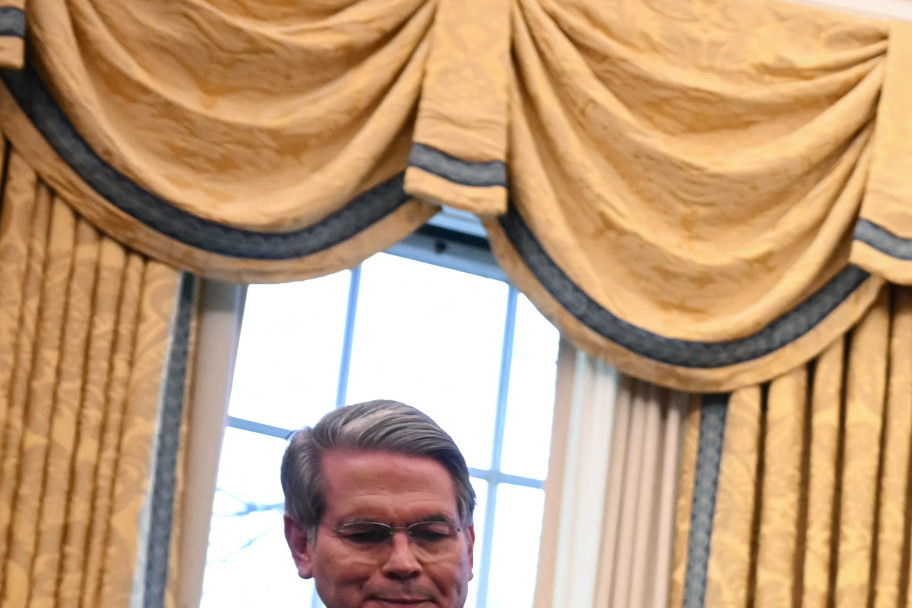Among the many swift, sweeping actions taken by President Donald Trump in the two weeks since his inauguration, there’s the signing of an executive order calling for the creation of a U.S. sovereign wealth fund.
“We have tremendous potential,” the president said while signing the order on Monday in the Oval Office. “I think in a short period of time, we’d have one of the biggest funds,” he said, suggesting the fund might end up buying video-sharing platform TikTok.
However, some experts have been critical of a U.S. sovereign wealth fund since Trump first floated it during his presidential campaign, fearing the nation won’t match the financial firepower of some of the biggest sovereign wealth funds in the world.
Why It Matters
During his 2024 presidential campaign, Trump ran on the same motto that fueled his victory in 2016: “Make America Great Again.” The president has promised to bring down inflation and boost economic growth, presenting tariffs as a solution. In the past two weeks, he has already enacted a number of policies in this direction, threatening Canada and Mexico with 25 percent tariffs and imposing a 10 percent tariff on Chinese goods.
Trump’s goal in creating a sovereign wealth fund is to generate more federal revenues as he’s planning to introduce new tax cuts and shrink the size of the government; however, experts warn that the government might not have enough money to set up a strong fund.
What to Know
Sovereign wealth funds (SWFs) are investment funds set up by national governments and composed of assets such as stocks, bonds, real estate, and other financial instruments. While the funding for a SWF can come from different sources, popular ones are a country’s budget surpluses, state-owned natural resources revenues, bank reserves, and foreign currency operations.
These funds are normally created with a specific mandate to generate economic benefits for a state’s citizens.

U.S. President Donald Trump, alongside Secretary of Treasury Scott Bessent (L) and Secretary of Commerce nominee Howard Lutnick (R), signs an executive order to create a US sovereign wealth fund, in the Oval Office of… U.S. President Donald Trump, alongside Secretary of Treasury Scott Bessent (L) and Secretary of Commerce nominee Howard Lutnick (R), signs an executive order to create a US sovereign wealth fund, in the Oval Office of the White House on February 3, 2025, in Washington, DC. JIM WATSON/AFP via Getty Images
While the federal government does not have a sovereign wealth fund, 21 states in the U.S. already have their own.
The largest is the Alaska Permanent Fund Corporation, started in 1976, which as of December 31 was worth $79.6 billion. The fund pays annual dividends to Alaska residents: last year, over 600,000 Alaskans received a dividend of $1,702.
There are over 90 sovereign wealth funds around the world, according to the International Forum of Sovereign Wealth Funds, but the biggest ones are in countries that have large foreign exchange reserves, like China, or big revenues from the sale of oil and other natural resources, like Norway and Saudi Arabia.
Overall, more than $8 trillion is managed by SWFs, the institute writes.
Norway
Norway Government Pension Fund Global is the biggest SWF in the world, with a total of $1,738,806,263,000 in assets, according to data from the SWF Institute. It was established in 1990 as the Government Petroleum Fund with the idea of holding surplus revenues from Norway’s oil trade.
The fund invests in equities, fixed income, and real estate, according to Investopedia.
China
China Investment Corporation, founded in 2007 and based in Beijing, is the second-biggest SWF in the world, with $1,332,071,000,000 in assets. It’s used to manage part of the country’s foreign currency reserves.
China owns the third-biggest SWF in the world, SAFE Investment Company, founded in 1997 and with current assets totalling $1,090,000,000,000.
United Arab Emirates
Abu Dhabi Investment Authority, founded in 1976, is the fourth-biggest SWF in the world, with $1,057,545,000,000 in assets.
Kuwait
Kuwait Investment Authority, founded in 1953, has a total of $1,029,000,000,000 in assets. It’s the fifth-biggest SWF in the world.
Saudi Arabia
The Public Investment Fund of Saudi Arabia, founded in 1971 and located in Riyadh, Saudi Arabia, is the sixth-biggest SWF in the world with $925,000,000,000 in assets.
Other countries with sovereign wealth funds include Qatar, Turkey, Korea, Azerbaijan, Kazakhstan, Oman, New Zealand, Ethiopia, Libya, Russia, Azerbaijan, Malta, Ireland, Egypt, Indonesia, Chile, and Japan, among other smaller ones.
What’s Next
The executive order signed by Trump on Monday directs the Treasury and Commerce Departments to submit a plan to create a U.S. sovereign wealth fund within 90 days, including recommendations on “funding mechanism, investment strategies, fund structure, and a governance model.”
The president didn’t provide many details about how the U.S. sovereign wealth fund will be operated and financed. “It’s a very exciting event. We’re going to have a sovereign wealth fund, which we’ve never had,” he said. “We have a lot of things that create wealth, and you’re seeing that over the last two weeks, I think we’ve created more wealth.”
Treasury Secretary Scott Bessent said the idea is “to monetize the asset side of the U.S. balance sheet for the American people” through “a combination of liquid assets, assets that we have in this country as we work to bring them out for the American people.” Trump has previously suggested revenues from “tariffs and other intelligent things” could go into the fund.
Experts are doubtful about how a U.S. sovereign wealth fund might work. Researchers at the Center for Global Development wrote in a recent update: “Even amid (rare) growing bipartisan interest, there are big questions about the practicalities of emerging SWF proposals—including what resources would be used to capitalize such a fund, what investments it would support, where it might be housed, and the relevance of a SWF in the U.S. context.”
